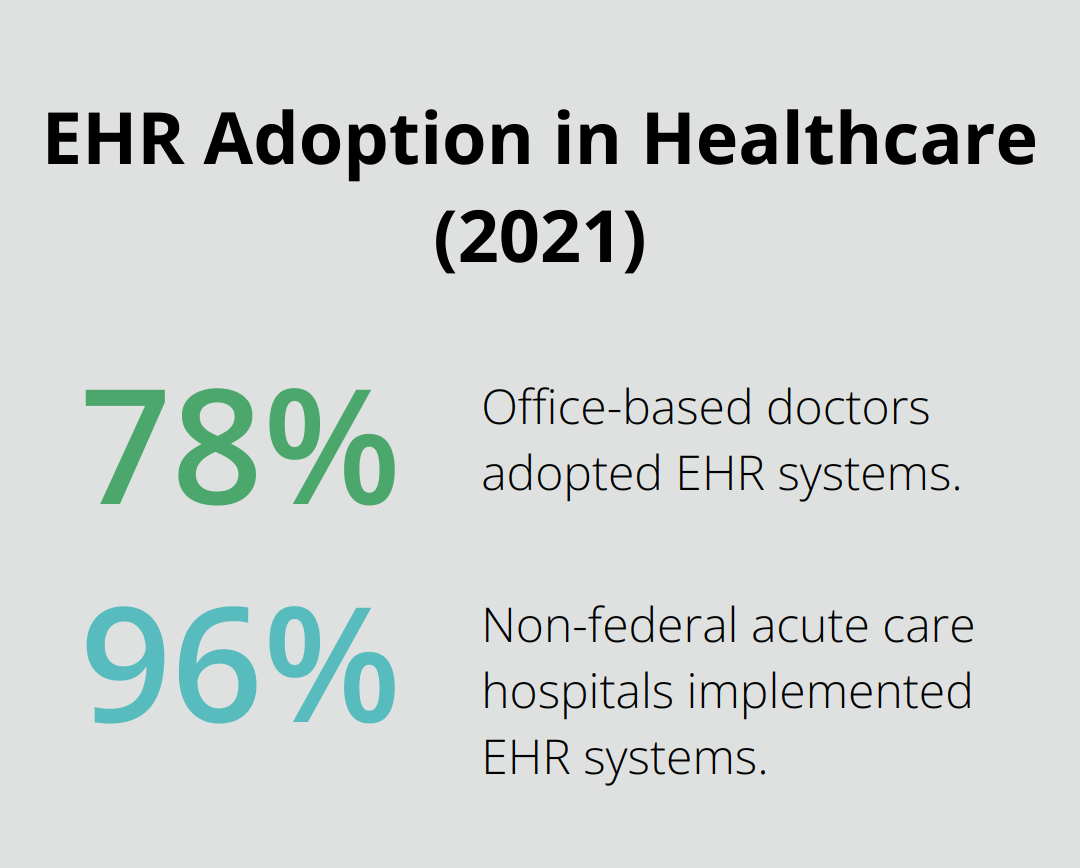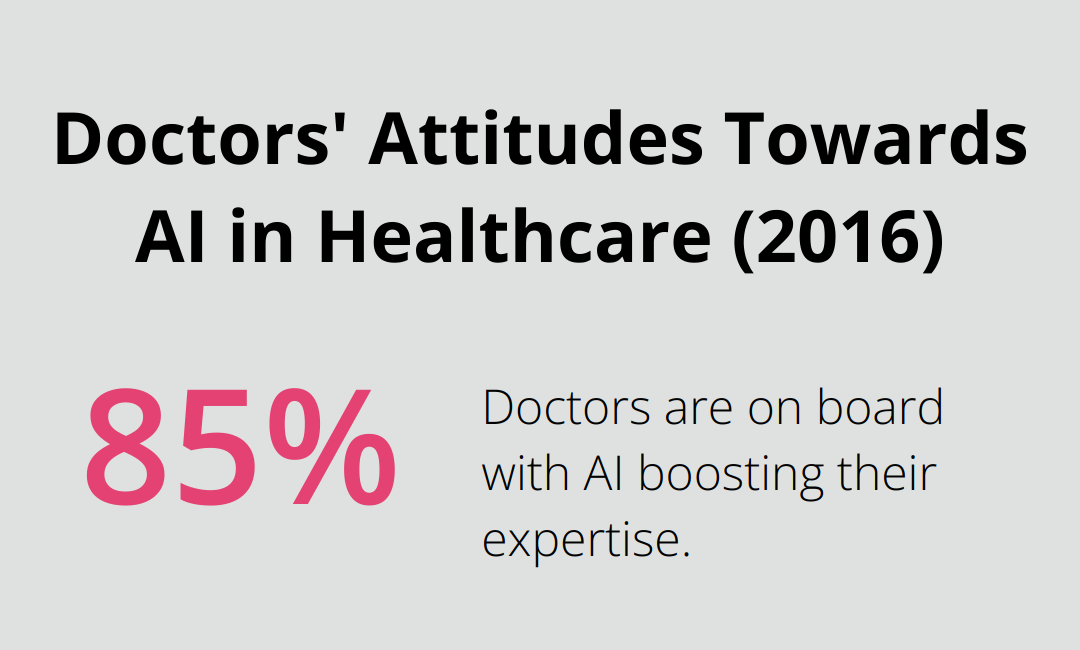Healthcare automation — it’s not just a buzzword, it’s changing the game in medicine. We’re talking about a real shift in the way hospitals and clinics get things done. It’s making everything smoother and, let’s be honest, a lot less of a headache.
So, what’s shaking at ScriberJoy? We’ve been right in the thick of it — automation has shown us that you can boost productivity without cutting corners on patient care. We’re diving into where automation makes the biggest splash and sharing some down-to-earth tips to get this tech up and running.
Where to Start with Healthcare Automation
Alright, listen up. We’re talking about transforming the healthcare game with automation. It’s changing how hospitals and clinics do their thing, boosting efficiency without undermining patient care. We’re diving into the areas where automation really earns its keep and throwing in some practical tips to get you rolling.
Streamlining the Front Desk
First stop-admin tasks-the low-hanging fruit of automation (because who doesn’t love a good fruit metaphor). Scheduling systems let patients snag appointments anytime, which is a win for cutting those no-show rates. Automated billing? Yeah, it slashes errors and speeds up reimbursement. EHR systems, if you do ’em right, can save practices up to 10 hours a week on paperwork. And time is money, baby.
Enhancing Clinical Workflows
This is where automation starts flexing its muscles. It’s got patient monitoring and medication management down. Think wearable devices and IoT sensors keeping an eagle eye on vitals and giving staff the heads-up before small issues become big ones. Automated dispensing systems chip away at medication errors. AI-powered data tools are out there spotting trends and predicting outcomes like some sort of healthcare Nostradamus. Decision-making just got a facelift.
Optimizing Behind-the-Scenes Operations
Back office stuff-often ignored, but ripe for automation. Inventory management takes a leap with systems tracking supplies in real-time… goodbye, waste; hello, savings. And supply chain optimization isn’t just a fancy word for cutting costs-it’s how the pros do it. Facility maintenance? Smart systems are on it, monitoring equipment and scheduling maintenance before anything hits the fan. We’re talking fewer breakdowns, folks.
Choosing the Right Tasks to Automate
The plan? It’s not to turn everything over to the machines-sorry, sci-fi fans-but to be strategic. Zoom in on tasks that are:
- Repetitive
- Time-consuming
- Teeming with human error
This game plan frees up staff to bring their A-game in compassionate, personalized patient care.
Implementing Automation Technologies
So how do you bring this magic into the healthcare space?
- Kick things off small-with pilot projects
- Get staff in on the action; they should have a say
- Invest in thorough training and support
- Keep a watchful eye and refine those processes
As we charge ahead, it’s crucial to keep sight of maintaining and even boosting care quality while weaving in these automated systems. We’ll dig deeper into this crucial aspect in the next section-stay tuned.
How to Implement Automation in Healthcare
So… healthcare automation. It’s not just about shelling out for the latest gizmo; it’s about weaving it into the fabric of how things are done. Play it right, and you can fundamentally rejig medical practices. Here’s the scoop on the crucial tech and strategies for getting it done right.
Electronic Health Records: The Foundation
Electronic Health Records (EHR) systems aren’t just another tool; they’re the spine of healthcare automation. By 2021, a whopping 4 out of 5 office-based docs (that’s 78%) and nearly every non-federal acute care hospital (96%) jumped on the EHR bandwagon. But remember, it’s all about implementation. Kick off with a solid needs assessment, find that EHR system that fits like a glove with your workflows. Train your team like their lives depend on it-’cause they kind of do-and roll it out in stages to keep the chaos at bay.

Robotic Process Automation: The Efficiency Booster
Enter Robotic Process Automation (RPA)-the secret weapon for mind-numbing, repetitive tasks. Think claims processing, booking appointments, plugging in data… the works. Dip a toe in the water; start small-pick one process, automate it, watch the magic. This lets you tweak along the way and gets your team comfortable with the tech.
AI and Machine Learning: The Decision Support Powerhouse
AI and machine learning are shaking up predictive analytics and decision support in healthcare like never before. They’re the secret sauce making medical imaging sharper and heart disease diagnosis spot on with less room for human slip-ups. Zone in on diagnostic aids, plotting treatment paths, and scoring patient risks. Team up with clinicians to ensure these AI tools are team players, boosting-never replacing-that irreplaceable human wisdom.
Practical Steps for Implementation
- Dive deep into your current playbook and see what’s what.
- Pinpoint where automation could hit hardest-those pesky repetitive tasks that trip up even the best humans.
- Start with pilot projects-test, refine, rinse, repeat.
- Bet big on training for your crew.
- Keep an eye on the metrics, tweak as you go.

Overcoming Implementation Challenges
Bringing automation into the healthcare fold-it’s no walk in the park. Expect pushback from staff wary of change, fears about job security, tech bumps in the road. Face these head-on with open chatter, loop your team in on decisions, and hold their hands through the technical upheaval.
Remember, automation should supercharge human talent, not squash it. The mission? Free healthcare pros so they can shine at what they’re best at-dishing out compassionate, personalized care. As we hurtle down this path of automation, the next big milestone? Ensuring these tech wonders amp up (not water down) the quality of care. Let’s dig into keeping and upping the game in care quality while riding the automation wave.
How to Maintain Care Quality While Automating Healthcare
Keep Humans in the Loop
So, let’s clear this up-automation isn’t about fleshy meat sacks getting replaced by shiny machines. Nope. It’s about giving doctors and nurses an Iron Man suit. Remember that 2016 survey? Yeah, 85% of docs are on board with AI boosting their expertise. Smart move: set things up so when automation spots a hiccup in the system, a human pro takes a look. Like if an AI perks up with “uh oh” signals on a patient’s vitals-bam, it’s nurse prism time.

Implement Rigorous Quality Checks
Ah, audits. Glamorous as watching paint dry, but crucial. The folks at the Joint Commission are the eagle-eyed overlords here, suggesting some good ol’ quarterly audits. Regular check-ups to make sure the tech is behaving. Get a crew to deep dive into data accuracy and system functioning. For the AI doc wannabe, constantly stack its results against seasoned pros. Keep it real, keep it honest.
Prioritize Ongoing Training
Fasten your seatbelts-tech speeds along faster than a caffeinated squirrel. The Healthcare Information and Management Systems Society (HIMSS) nods wisely at this, pushing for at least 10% of IT budgets dedicated to training. But this isn’t your granny’s piano lessons. This is understanding the ‘why’ behind the ‘how’ of automation. Keep your team sharp, alert, and ready to spot trouble before it turns into a fiasco.
Personalize Patient Interactions
Word of the day: empathy. Despite tech’s rise, the art of listening and human connection matters. Automate the mundane, win back precious minutes for personal touch. A little birdie from the New England Journal of Medicine chirps that customized care plans notch up treatment adherence by 30%. So, let the gizmos gather intel-but let the white coats use it for heart-to-heart confab.
Monitor and Adjust
You can’t “set it and forget it” with this stuff. Keep an eye-no, both eyes-on the key metrics: error rates, smiles or frowns from patients, and what staff are yammering about. If the tech’s performance is more Titanic than Apollo 11, pivot like an NBA player. You won’t get it perfect every time-which is why you stay ready to tweak or ditch and switch.
Final Thoughts
Okay, folks, picture this: automation is shaking up the healthcare arena like never before. We’re talking fewer slip-ups, supercharged efficiency, and caregivers finally getting back to what really matters-caring for you and me. The road ahead? It’s looking pretty darn shiny. Expect AI to become your doc’s trusty sidekick, diving even deeper into data to boost our health outcomes.
Enter ScriberJoy-your friendly neighborhood disruptor. Our medical transcription software is cutting through the noise, transforming paperwork chaos into streamlined bliss. More efficiency means more face time with the doc. It’s all about keeping our eyes on the prize: better care, better outcomes.
Healthcare automation isn’t a slow-moving turtle; it’s a full-speed-ahead bullet train. But even as we ride this wave of technology, we can’t lose the human touch. Embrace the bots, sure-but don’t forget the heart. That’s the path to a healthcare system that’s not only a well-oiled machine but also one that remembers we’re all humans on this journey together.

Leave a Reply
You must be logged in to post a comment.